Intel announces SSD 665p with 96-layer QLC NAND
September 26, 2019 | 07:30
Companies: #intel #silicon-motion
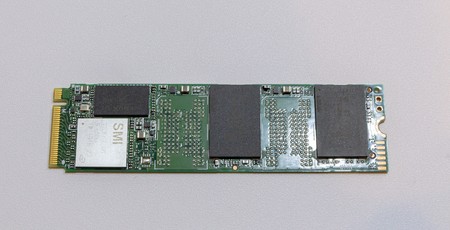
Intel has used its Memory and Storage Day 2019 in Seoul, Korea to announce a new value-focused consumer SSD featuring new 96-layer 3D QLC NAND and set to launch next quarter, while also demonstrating next-gen 144-layer 3D QLC NAND that’s on track to launch in products in 2020.
Intel has already used its QLC NAND in consumer-grade SSDs, including the SSD 660p from last year (QLC NAND only) and the Optane Memory H10 (3D XPoint cache paired with QLC NAND on a single M.2 device), and the main change for the SSD 665p is the transition from 64-layer NAND to 96-layer NAND, thereby increasing the storage density and reducing the cost-per-gigabyte even lower. It’s this value messaging that’s key with QLC NAND, as it does come with sacrifices with regards to performance and endurance, but these have largely been mitigated, at least to a degree that makes QLC still very viable for consumer-grade workloads. For instance, performance is mitigated via the use of an SLC cache (dynamic in size on the SSD 665p), and endurance is mitigated by wear levelling and other such algorithms.
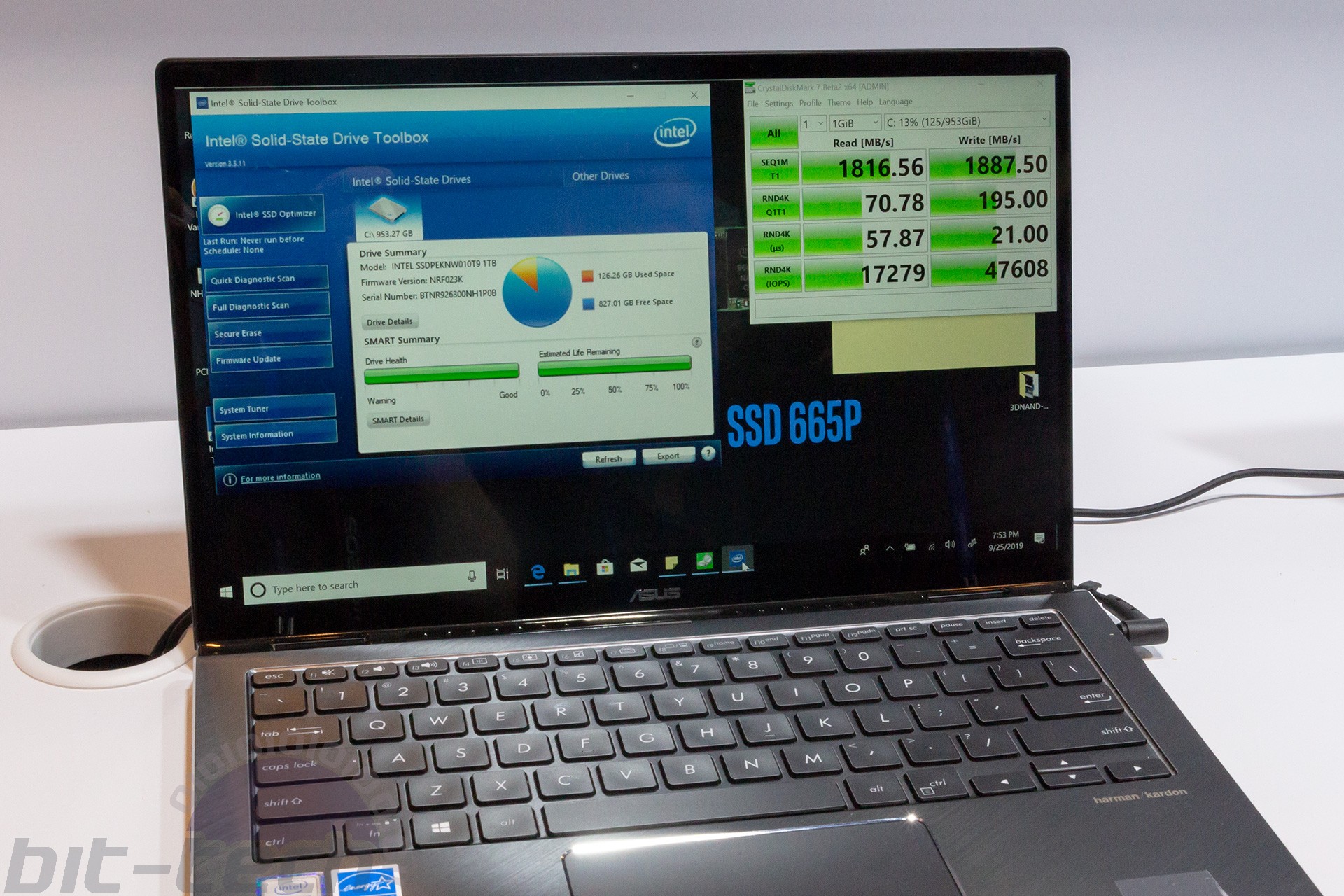
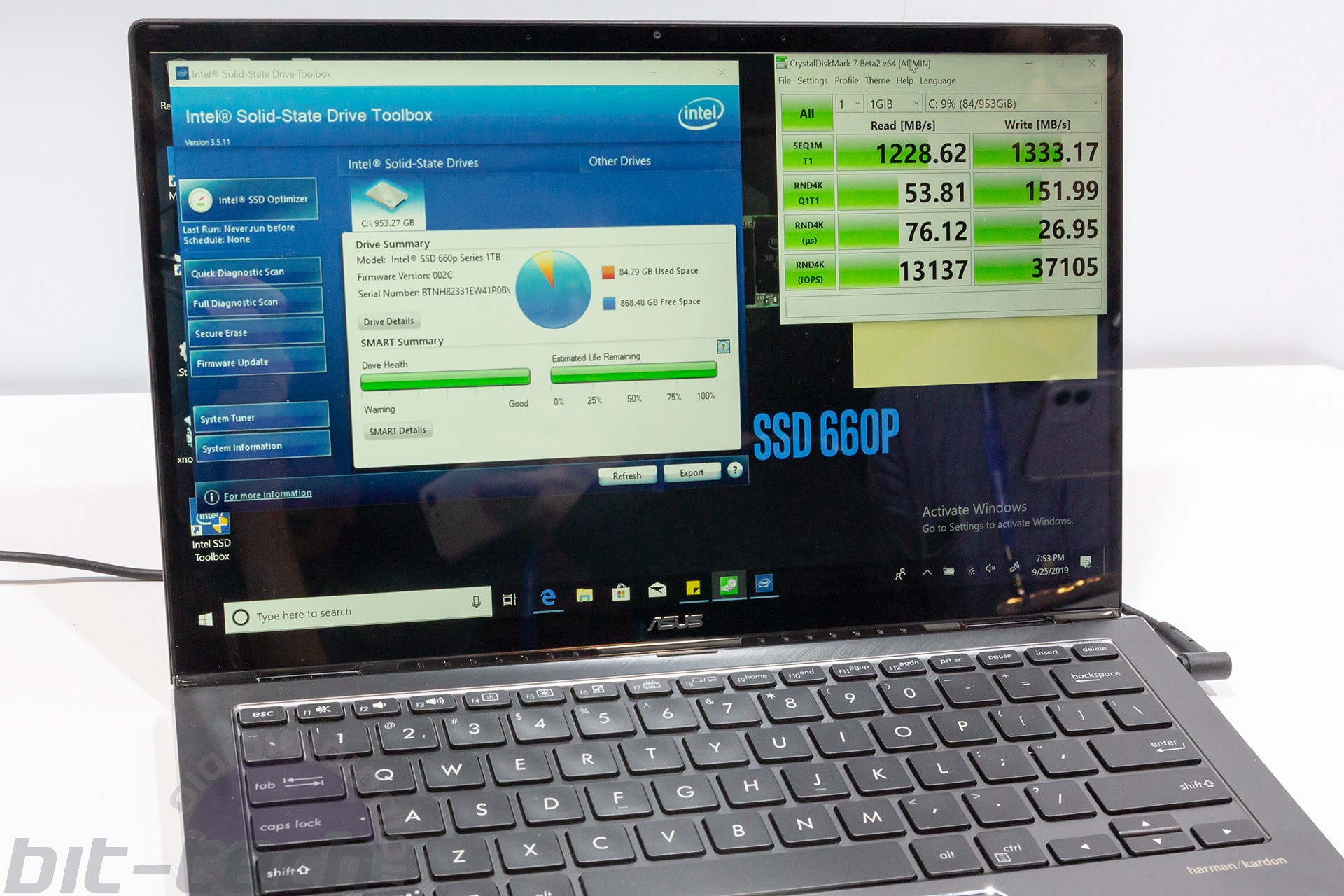
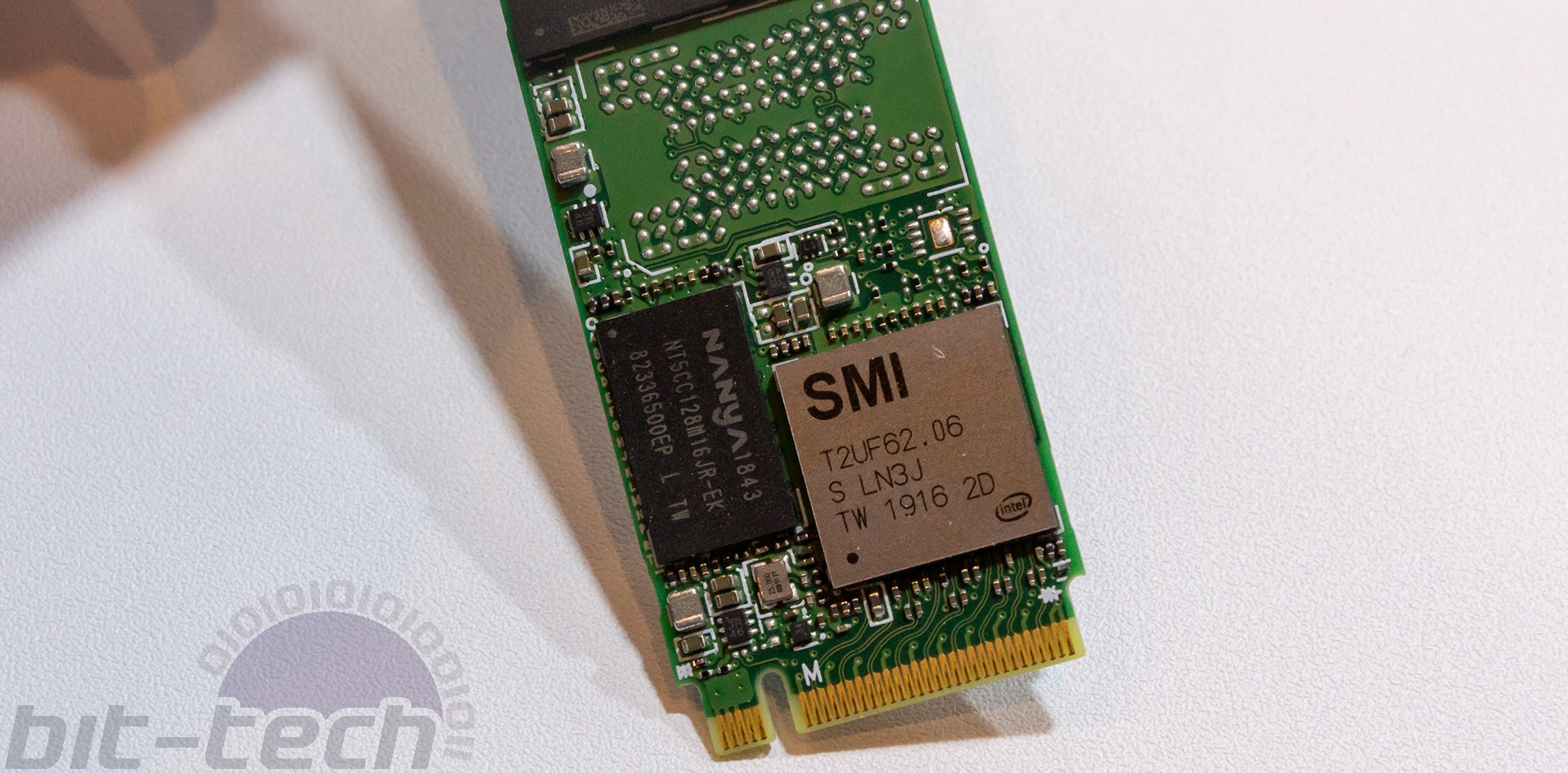
As with the SSD 600p, the SSD 665p will be available in single-sided M.2 2280 modules only, with capacities including 512GB, 1TB, and 2TB. The reason 2.5” models are excluded is mainly because of the reliance on PCIe 3.0 x4 as the interface; U.2, the PCIe-based 2.5” form factor, really hasn’t taken off in the consumer space. While Intel did show a controlled demo showing higher performance on the new SSD versus the old one (see the pictures above), we currently have no final details on the performance specifications of the 665p, as it's still being optimised for the new controller, which is still based on a four-channel Silicon Motion SM2263 solution but one that’s apparently slightly tweaked compared to the 600p. Likewise, the expected retail pricing, cost per gigabyte, and the exact release date are yet to be confirmed. We do know at this stage the drives will enter mass production in Q4.

In the wake of becoming known for falling massively behind schedule on new CPU process nodes like 10nm, Intel was keen to demonstrate that the next-generation of 3D NAND technology is very much on track, choosing to run its entire day of presentations off of a 144-layer 3D QLC NAND SSD. Intel expects to ship (or at least produce) SSDs using this technology in 2020. We snapped a pic of the system in question, with a drive set up as 400GB (374GiB), though it’s probably too early to read much into this in terms of what final products will look like.
Looking even further into the future, albeit speculatively, Intel has described its current floating gate NAND technology as looking promising for Penta-Level Cell (PLC) NAND, which would increase the bits-per-cell count from four in QLC to five, doubling the voltage states and massively increasing the complexity of writing dtaa and maintaining charge states (i.e. data). At this stage, this is no confirmation of any product or upcoming families, but it wouldn’t be surprising to see Intel PLC drives introduced as cost-effective consumer solutions a few years down the line, as it’s know that competitors are working on similar products.

MSI MPG Velox 100R Chassis Review
October 14 2021 | 15:04


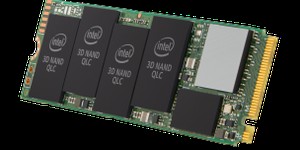





Want to comment? Please log in.